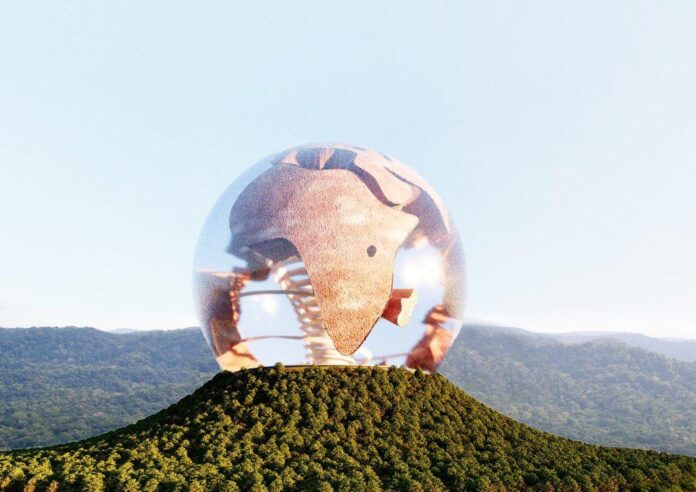The United Nations Educational, Scientific and Cultural Organization—more commonly known as UNESCO—is creating a virtual museum of stolen cultural objects.
“The project aims at designing the first virtual immersive reality museum of stolen cultural objects at a global scale. It will contribute to raising awareness among the general public to the consequences of illicit trafficking of cultural property and contribute to the recovery of stolen objects,” reads a statement on UNESCO’s website.
The agency is collaborating with Interpol and other partners for the $2.5 million online museum. Funding for the project’s first phase comes from Saudi Arabia.
The museum was announced in September 2022 but the agency held a meeting last week with a first look at the schematic design by Francis Kéré, a native of Burkina Faso and winner of the 2022 Pritzker Architecture Prize.

Audrey Azoulay, the director-general of UNESCO, is pictured with Francis Kéré, the architect of the new online museum. Photo courtesy of UNESCO/Christelle ALIX
UNESCO chose to partner with Kéré because of his shared priorities with the U.N.’s culture agency.
“For this project, we needed an architect capable of rewriting the traditional playbook, who could design spaces while thinking outside the box, who could intimately link the material with the immaterial,” said Audrey Azoulay, UNESCO director-general, in an email.
Kéré’s 3D designs take the form of a baobab tree, which is central to the lives of many African communities and serves a symbol of resilience. The museum’s architecture will also draw from New York’s Guggenheim Museum — which happens to be a UNESCO World Heritage Site — which is famous for its spiral path. “Through the act of circulating virtually, visitors will be able to embody the search for stolen art across the globe,” a statement for the organization said.
Online visitors will be able to explore virtual 3D spaces “as in a real museum” and access educational materials, UNESCO said. The museum will also include stories and testimonies from local communities.
“The virtual museum will be a game-changing tool to raise awareness on the illicit trafficking and the importance of protecting cultural heritage among the relevant authorities, culture professionals and the general public, notably young generations,” UNESCO said in an announcement for last week’s meeting.
“It will also represent a catalyzing moment among the international community who has made continuous efforts over the years to put the illicit trafficking of cultural objects on the policy agenda.”
The museum is expected to go live in 2025. The first 600 items to be displayed are works of art on Interpol’s list. The items that will make up the museum’s first exhibition will not be named until shortly before opening, according to , which reports that the objects on the coalition’s list include a third-century alabaster stone inscription stolen from Yemen’s Awwam Temple, a seventh-century B.C. ivory relief looted from the Baghdad Museum, and a fifth- or sixth-century figurine stolen from a temple complex in Rajasthan, India.
The goal of the museum, unlike more traditional institutions, is not to expand its collection but to gradually empty itself, as the objects are, ideally, eventually recovered.
“While this virtual exhibition won’t make up for the physical lack of these artworks, it will at least restore fundamental access to them and help strengthen advocacy for their return,” Azoulay said.
“It’s about imagining a museum in a way that’s never been done before,” Azoulay said, “where the presentation of each artwork is a deep dive into its universe, into the cultural and social movements from which it was born.”
See below for more renderings of the museum.

Online visitors will be able to explore virtual 3D spaces “as in a real museum” and get access to educational digital materials. Image courtesy of UNESCO/Kéré Architecture.

Francis Kéré’s design for the virtual UNESCO museum takes inspiration from the baobab tree. Image courtesy of UNESCO/Kéré Architecture.

The museum will be “a game-changing tool to raise awareness,” says UNESCO. Image courtesy of UNESCO/Kéré Architecture.

The new UNESCO museum was designed by Francis Kéré, a native of Burkina Faso and 2022 laureate of the Pritzker Architecture Prize. Image courtesy of UNESCO/Kéré Architecture.
More Trending Stories:

























